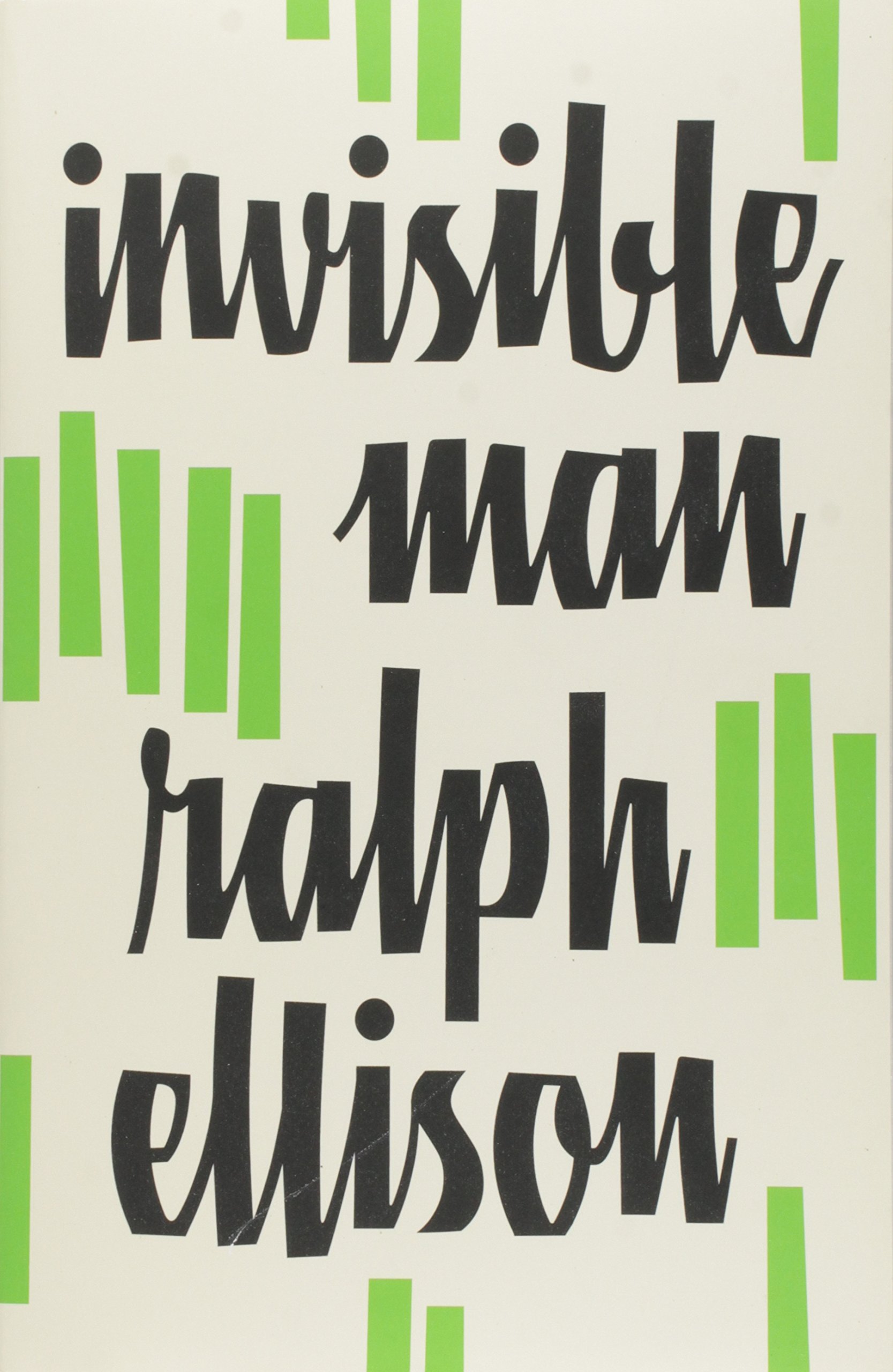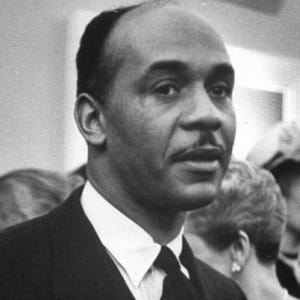Invisible Man Summary
7 min read ⌚
 No, this is not a summary of the H. G. Wells’ SF novel about the actual invisible man, nor it is about many of the comic characters based on him.
No, this is not a summary of the H. G. Wells’ SF novel about the actual invisible man, nor it is about many of the comic characters based on him.
Ralph Ellison’s “Invisible Man” is the story of the invisible men you can see but choose not to.
So, yes – it’s even scarier.
Because it’s real life.
Who Should Read “Invisible Man”? And Why?
There are too many invisible men walking among us. Many of them are hurt and troubled. And the pain of each and every one of them is important.
Literature is one of the ways we can learn about it through their eyes.
Just as we first saw the other side of the African continent through the eyes of Chinua Achebe, we first saw a new side of the African-American struggle for freedom through the eyes of Ralph Ellison.
And it’s essential that we see it over and over again.
Ralph Ellison Biography
Ralph Ellison was an African-American novelist and scholar, most famous for his debut novel “Invisible Man,” which will end up being his only novel published during his life.
was an African-American novelist and scholar, most famous for his debut novel “Invisible Man,” which will end up being his only novel published during his life.
His second novel, “Juneteenth” was published posthumously in 1999, both as a condensed 368-page novel and as a gargantuan 1000-page edited manuscript titled “Three Days Before Shooting…”
Ralph Ellison also wrote stories – collected in “Flying Home and Other Stories” in 1996 – and non-fiction works.
One of his essays collections, “Shadow and Act,” is considered a milestone in the American history of letters, and is regularly included among the best nonfiction books of the 20th century.
Plot
“Invisible Man” opens with one of the most famous passages of its kind in modern literature:
I am invisible, understand, simply because people refuse to see me. Like the bodiless heads you see sometimes in circus sideshows, it is as though I have been surrounded by mirrors of hard, distorting glass. When they approach me, they see only my surroundings, themselves or figments of their imagination, indeed, everything and anything except me.
So, basically, our unnamed narrator has the problem H. G. Wells’ Dr. Griffin, the original Invisible Man, has: he is irretrievably imperceptible for the people around him.
The only difference between the two is that Ralph Ellison’s guy didn’t need to experiment with mirrors or anything to disappear from the face of the earth.
The day he was born black was the day he became invisible.
Unwilling (or incapable) to use his unwanted superpower to do bad things – unlike Dr. Griffin – this unnamed narrator hasn’t gotten too far down the road of life.
After all, at the beginning (and the end) of the novel, he hibernates in some underground room where there are hundreds of electric lights operated via stolen power.
At least, he is able to see himself, right?
Hold that thought – that’s actually what the novel is about.
But that you’ll realize at the end.
In the meantime – we’ll reminisce a bit with Ellison.
About 600 pages, that is.
So, how did the narrator get to where he currently is?
Well, like many other things, his story begins way before he was born.
Namely, his grandparents were slaves freed after the Civil War (thanks to none other but this man). His grandfather, a meek and obedient fellow, changed his mind on his deathbed, imploring his grandson to infiltrate the white-controlled system and use it against the whites.
Great, grandpa, thinks the unnamed narrator, but I’d rather try not to get killed!
So, he does everything in his power to excel at being black. Which, in his time, means being dutiful and submissive.
Which is, of course, rewarded by the whites: after he graduates, the narrator gets a briefcase and a scholarship from the leaders of his town.
We forgot to mention two things, though.
First of all, it’s a scholarship to an all-black college. And second, the final thing he has to do to get the scholarship is the least academic thing you can think of: fight a humiliating blindfolded battle royal.
You don’t need a link to understand what a battle royal is.
And you don’t need to read “The Bluest Eye” or “Same Kind of Different as Me” to know that white folks excelled at humiliating blacks until just recently.
That’s Western civilization for you, right there!
Anyway, battle royal or not, the narrator doesn’t change yet: he is a model college student as well. He even hopes to one day be able to work for the head of the school, Mr. Bledsoe.
And one day in his junior year, he gets a strange chance to prove his worth: he is chosen to drive Mr. Norton, a wealthy white trustee and one of the school’s founders.
However, things don’t go as well as the narrator hopes for.
First of all, by chance, they end up at the cabin of Jim Trueblood, who, supposedly in his sleep, impregnated both his wife and his daughter.
Upon hearing this, Mr. Norton – and we can’t blame him for that, really – asks the narrator to take him to the nearest bar.
As it happens, the nearest bar is something of an asylum/brothel composite, so, expectedly, by the end of the night, the narrator has trouble saving both his and the life of Mr. Norton.
Afterward, even less surprisingly, he has trouble staying at school: he is kicked out of college by Dr. Bledsoe, who is kind enough to give him some letters of recommendation.
Well, “kind” isn’t exactly the right word – because, as the narrator learns after few attempts, the recommendation letters recommend their recipients to pay no attention to their sender.
Isn’t that wonderful?
Crushed to his very core, the narrator takes up a job at Liberty Paints, a factory renowned for the pure white color it produces, “Optic White.”
The chief attendant of its boiler room, Lucius Brockway, is strangely paranoid that our narrator is there to take his job. So, he tricks him into setting an explosion which leads to three things: the end of the narrator’s Liberty Paints career, a hospitalization, and some kind of medical experimentation on him.
Our narrator leaves the hospital unafraid, but wobbly.
So, he faints on the streets of Harlem.
Fortunately, a kind woman named Mary Rembo takes him under her wing. During his stay there, he notices a black couple being evicted, and he gives an impromptu speech which stirs up the crowd which then attacks the law enforcement officials.
This doesn’t go unnoticed by Brother Jack, who initiates him into a multiracial organization called the Brotherhood. And let’s just say that their favorite book is “The Communist Manifesto.”
In the beginning, things go great: the narrator is an excellent orator, and he earns both the admiration of the Harlem communities and some money to move out from Mary Rembo’s house.
However, he gets into some trouble with a black nationalist called Ras the Exhorter, who believes that the Brotherhood is controlled by whites. Neither our narrator nor Tod Clifton, a youth leader in the Brotherhood, believe Ras.
Unfortunately, the Brotherhood doesn’t believe them either.
First of all, the narrator is blamed that he has put his personal ambition ahead of the Brotherhood’s cause (and that’s a big no-no for communists), so he’s reassigned.
And then, Tod Clifton is missing.
The narrator finds him selling Sambo dolls on the street and learns that he’s become disillusioned with the Brotherhood.
Things go from bad to worse when the narrator witnesses Tod Clifton being shot by a police officer. He asks the Brotherhood for help regarding his funeral but basically ends up organizing it himself.
There, he delivers another one of his famous speeches – which, like most of the great things he does, doesn’t go well with the ones above him.
So, instead of being commended by the Brotherhood, he’s chastised by its leaders for burying a traitor selling Sambo dolls! Which spells the end of our narrator’s belief that the Brotherhood is interested in helping the black community.
Invisible Man Epilogue
Of course, it doesn’t spell the end of Ras’s interest to hurt our narrator for being part of a treacherous organization controlled by whites.
So as to escape his men, he buys a hat and a pair of sunglasses. Thinks obviously work, since he’s mistaken for someone named Rinehart, known as both a spiritual leader and a hipster, a gambler and a briber, a pimp and a fighter, a lover and a reverend.
All in all, a Jack-of-all-trades who has sacrificed his own identity to adapt to the white society.
Zoom out: that’s exactly what’s happening with our disguised narrator at the moment.
His new goal: to undermine the Brotherhood’s cause.
However, he’s not very good at doing this, and things don’t really go his way.
In the meantime, riots break out in Harlem, and the narrator realizes that that’s what the Brotherhood had hoped for all that time.
Upset, the narrator happens upon Ras – now “Ras the Destroyer” – who demands his head. After a brief scuffle, the narrator manages to escape and ends up falling down an underground coal bunker.
Two white men seal him there to force him to think over his stance – and the story comes back to where we started.
The novel ends with a sentence as memorable as the opening paragraph:
Who knows but that, on the lower frequencies, I speak for you?
Like this summary? We’d like to invite you to download our free 12 min app, for more amazing summaries and audiobooks.
“Invisible Man PDF Quotes”
What and how much had I lost by trying to do only what was expected of me instead of what I myself had wished to do? Share on X Life is to be lived, not controlled; and humanity is won by continuing to play in face of certain defeat. Share on X I was never more hated than when I tried to be honest. Or when, even as just now I've tried to articulate exactly what I felt to be the truth. No one was satisfied. Share on X I feel the need to reaffirm all of it, the whole unhappy territory and all the things loved and unloveable in it, for it is all part of me. Share on X I remember that I'm invisible and walk softly so as not awake the sleeping ones. Sometimes it is best not to awaken them; there are few things in the world as dangerous as sleepwalkers. Share on XOur Critical Review
“Invisible Man” is considered “the quintessential American picaresque of the 20th century,” which is a fancy way of saying that it’s both realistic and comical.
So, something like “Don Quixote” set in Depression-era U.S.
And, really, can you ask anything more than that from a great book?
Even Harold Bloom thinks not. And you probably know many things about his background, criteria, and disinterest for Multikulti post-colonial literature.
Emir is the Head of Marketing at 12min. In his spare time, he loves to meditate and play soccer.







